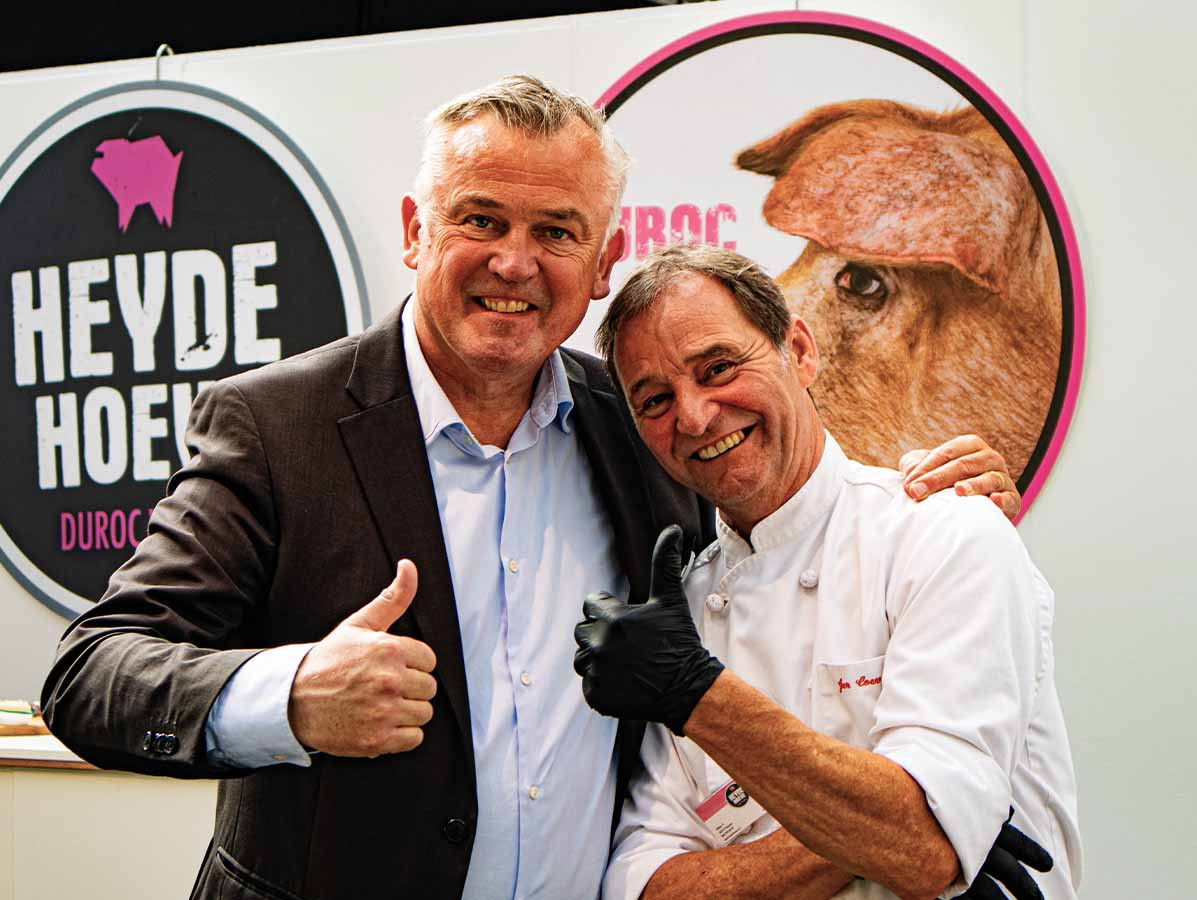
The market for pork concepts has been favorable in recent years. One of the oldest players in this market is Heihoef, best known for the Heyde Hoeve concept. For 20 years, their focus has been on taste and sustainability.
Tiny Schepers, founder of Heihoef, along with a group of like-minded agricultural entrepreneurs, found himself trapped in the downward spiral prevalent in the market at the time. To break free, they chose a different approach, prioritizing taste and sustainability over volume. The concept now includes twelve farmers across fifteen locations. “When the concept started in the late 90s, the idea was quite radical, and its idealistic image wasn’t always understood,” says Ben Bekhuis, responsible for sales. “Now, more people are receptive to meat that tastes better and is produced more environmentally friendly.”
"I believe there is still ample room for growth, particularly in supermarket shelves. A few years ago, these were predominantly stocked with conventional meat. Nowadays, nearly all pork comes with a 'Beter Leven' (Better Life) quality mark. However, it's a lengthy process. It took twenty years for a concept like ours to gain serious market acceptance. Our main challenge is attracting more pig farmers to meet the growing demand. So far, we've managed to supply consistently. To supply supermarkets on a significant scale, we simply need more pigs."
"This association is incorrect. The breed actually originates from the United States, bred for the tastiest possible meat. We chose it solely for its flavor. This meat offers beautiful marbling. However, we don't use 100% Duroc but a crossbreed of Duroc and Dutch Land pig, making the pork robust and tasty while remaining affordable. We could consider a crossbreed with Iberico, but that would double the cost instead of just a 20% increase."
"From a sustainability perspective, we decided against it. Organic pig farming is very animal-friendly but usually increases emissions. For example, organic farming requires a large outdoor area. It's great for the animals to root around in a mud puddle, but it's not sustainable. Keeping pigs indoors allows us to collect manure, purify the air, and remove fine dust, which is not feasible outdoors."
“We aim for a completely circular chain. We collaborate with Nature & Environment and other sustainability partners. We source our feed primarily from Europe, preferably from the Netherlands and areas where our farmers are located. We also use our manure there. We try to avoid using soy from South America. Additionally, we use a lot of by-products from the food industry, making the pig the most circular farm animal there is."
"Unlike most concepts that are part of a larger slaughterhouse, we manage our chain independently. We are autonomous. Our pigs are slaughtered at Compaxo. For meat sales, we collaborate with three wholesalers in the north, center, and south of the country. They mainly sell to butchers and the hospitality industry. Additionally, several companies process our products into dry sausage, pâté, ham, and dried ham in the style of Serrano or Parma ham. The hams are made at Ganda in Belgium."
'Utilizing every part of the pig is even more important in concepts'
"Utilizing every part of the pig is crucial in concepts. If you have to sell more parts as conventional meat, the final product becomes more expensive. We look for a wider range of partners for our final products, not just butchers and the hospitality industry, but also processors of products like dry sausage, minced meat, and minced meat products. Unfortunately, some parts, like tail meat and organs, are not easily marketed in the Netherlands and are exported by Compaxo."
"For now, we mainly use the food truck for marketing. It's a striking pink color, so it draws a lot of attention. We lend it to various relations for events like fairs or openings, allowing people to get acquainted with our brand."
Photo caption: Ben Bekhuis (left) next to Ger Coenraad (food truck specialist from Heyde Hoeve)
This article was previously published on Foodbusiness.nl
Source: Vakblad Voedingsindustrie 2024